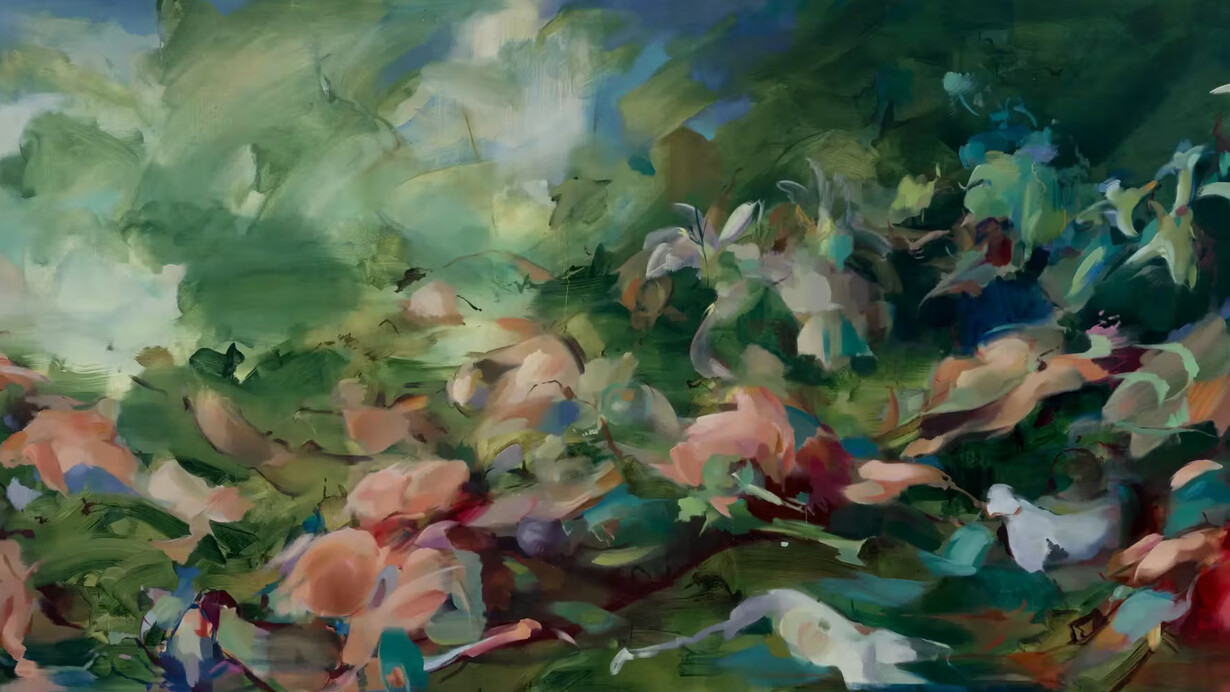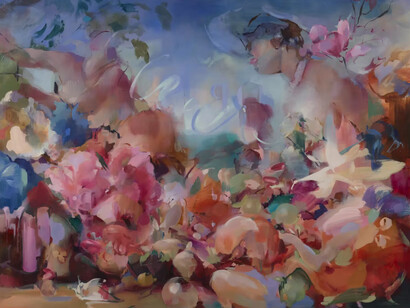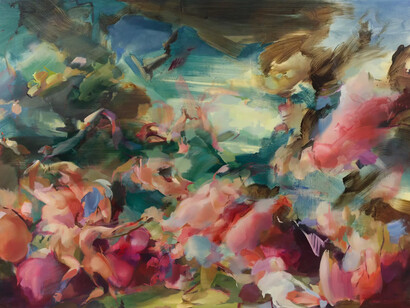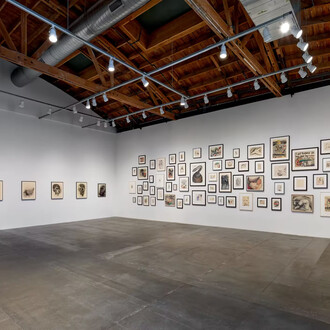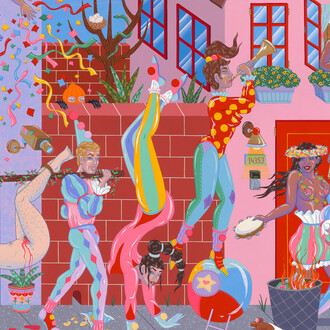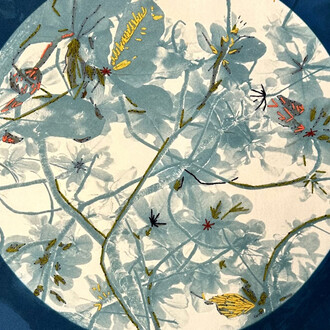Taking inspiration from art historical genres ranging from French rococo and Italian baroque to abstract expressionism, British artist Flora Yukhnovich creates paintings that celebrate materiality and process through shifting, chimerical forms, while seducing the viewer with elusive glints of content and meaning. For her first solo exhibition in Los Angeles and debut with Hauser & Wirth, Yukhnovich will present a new series of large-scale canvases prompted by the centuries old theme of Bacchanalia. In these canvases, lush, swirling brushstrokes evoke the dynamism and intense corporality of both ancient and contemporary hedonism, a past of satyric excesses and a present of consumerism and popular culture glut.
In Bacchanalia, Yukhnovich explores the frontier at which excess—as a concept, and as a visual and material conceit—begins to obscure rather than illuminate. Her compositions, abstracted and layered with both intricate flourishes and forceful gestures, resist a single focal point. Details are engulfed in a cacophony of marks, where color and texture dominate the optical experience before forms can settle: each painting suggests a scene that is simultaneously dissolving and coalescing. Yukhnovich’s ability to capture such intense flux allows her to convey the precarious balance of seduction and alienation inherent in modern excess. Drawing from a wide array of source images, Yukhnovich begins each painting by pinning visual artifacts to mood boards in her studio. As the work evolves, key references and throughlines emerge, shaping the compositional and chromatic variations that define each painting’s rhythmic logic. In Party in the U.S.A (2025), Yukhnovich uses the Columbia Pictures logo, featuring its stately Torch lady, as a point of departure. While only traces of the torchbearer remain, she preserves the cinematic widescreen ratio, granting the rolling clouds and classical allusions a grandeur that both suggests the glory of power and warns of its undoing. In the catalogue for the exhibition, Yukhnovich reflects on the enduring power such motifs have exerted across eras and places, from Roman temples to Vegas interiors:
‘I’m interested in what happens when repetition drains symbolism—when something meant to signify order begins to feel unhinged. I’d like my paintings to capture that tipping point, layering imagery until structure gives way to excess. Like a bacchanalian unravelling or like a still life just before the fruit starts to rot.’
Yukhnovich’s work processes centuries of iconography through a distinctly contemporary eye, folding the present into a broader aesthetic continuum of precedents. Among the works on view in the exhibition, two key references reflect this process. The first is the story of Heliogabalus, the young Roman emperor who, while ruling between 218 and 222 AD, allegedly drowned his party guests in rose petals. The second is Lawrence Alma-Tadema’s 1888 painting The roses of Heliogabalus, depicting this fantastical scene. To complete the work, Alma-Tadema had thousands of roses shipped from France to his studio in London, indulging in his own parallel act of imperial decadence. In Bacchanalia, Yukhnovich mines these lavish spectacles for meaning while foregrounding the excess pleasures of painting itself.
